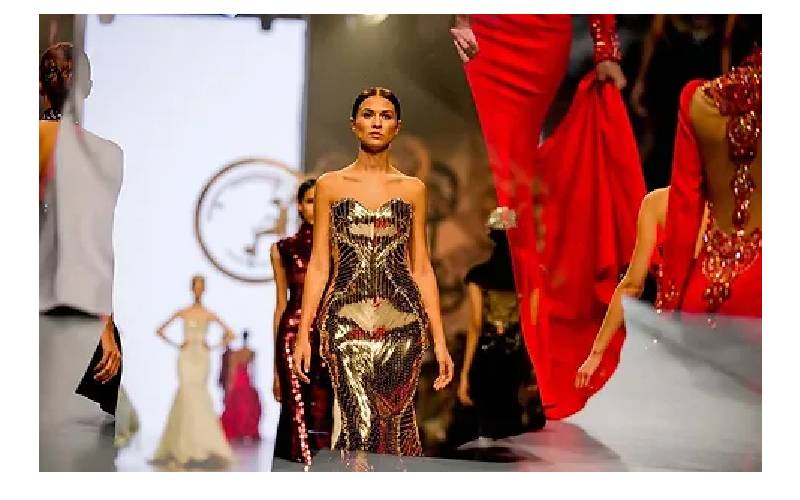In the realm of event photography, capturing emotion transcends the mere act of taking pictures; it’s an art form that requires an intuitive understanding of human feelings and moments. Event photographers are tasked with more than just documenting an event; they aim to encapsulate the emotional essence of their subjects, creating images that resonate with the viewer on a profound level. This ability to capture genuine emotions is what distinguishes great event photography from the mundane. Through a keen eye for detail, a mastery of technical skills, and a deep understanding of the human experience, event photographers transform fleeting moments into lasting memories. By focusing on emotional nuances, these photographers ensure that every smile, tear, and gesture is preserved with authenticity, allowing viewers to relive the event’s emotional journey.
Art Of Capturing Genuine Emotion: Techniques Used By Event Photographer
Capturing genuine emotion in event photography involves a blend of technical skill and emotional intelligence. One fundamental technique is the use of timing being able to anticipate and click at the precise moment when a subject’s emotion is most vivid. This requires a deep understanding of human behavior and the ability to read subtle cues that indicate a significant emotional moment is about to unfold. Another technique is the use of natural light to enhance the authenticity of the moment. Natural light often brings out the true colors and tones of a scene, making emotions appear more genuine and less contrived. Additionally, event photographer use strategic framing to draw attention to the subject’s emotional expressions. This might involve focusing on facial expressions, body language, and interactions between people to convey a story. By combining these techniques, event photographers create powerful images that capture the essence of their subjects’ emotions.

Event Photographer Use Lighting To Enhance Emotional Impact In Photos
Lighting plays a crucial role in the emotional impact of event photographs. Different lighting techniques can evoke various moods and highlight the emotional tone of an image. Soft, diffused lighting is often used to create a warm, intimate atmosphere, perfect for capturing tender moments such as a bride’s first look or a parent’s proud gaze. Conversely, dramatic, high-contrast lighting can emphasize the intensity of a moment, such as the high energy of a celebration or the gravity of a poignant speech. Event photographers often manipulate lighting to draw attention to specific elements within the frame, such as the emotional expressions of the subjects or the ambiance of the setting. Backlighting can be used to create silhouettes that emphasize the emotional weight of a moment, while side lighting can highlight texture and depth, adding layers of complexity to the emotional narrative. By mastering the art of lighting, photographers enhance the emotional depth and impact of their images, making them more evocative and memorable.
Role Of Composition In Emotion-Driven Event Photographer
Composition is a critical element in emotion-driven event photography, as it directs the viewer’s attention and shapes the emotional narrative of the image. The rule of thirds, for example, can be employed to place the subject in a way that enhances the emotional impact. Positioning a subject off-center can create a sense of balance or imbalance that reflects the emotional state of the moment. Leading lines can guide the viewer’s eye toward the emotional focal point of the photograph, while framing techniques can isolate the subject, drawing attention to their expressions and interactions. Depth of field also plays a significant role, with a shallow depth focusing on the subject and blurring the background to eliminate distractions and emphasize emotional content. Additionally, the use of symmetry or asymmetry in composition can convey different emotional tones, from harmony and peace to tension and dynamism. By carefully considering these compositional elements, event photographers craft images that not only capture but also enhance the emotional experience of the moment.
Importance Of Candid Moments: Event Photographer Capture True Feelings
Candid moments are the heart of capturing true emotions in event photography. Unlike posed photos, which can sometimes come across as artificial or contrived, candid shots reveal genuine reactions and interactions. To successfully capture candid moments, event photographers must blend into the background, remaining unobtrusive while maintaining a sharp eye for authentic moments. This requires a combination of patience, intuition, and the ability to predict emotional peaks. By observing the flow of the event and understanding the dynamics between individuals, photographers can anticipate when and where candid moments are likely to occur. Additionally, a keen awareness of the environment and the ability to react quickly are crucial in seizing those fleeting, spontaneous instances of genuine emotion. Candid photography captures the raw and unfiltered essence of an event, providing viewers with a more authentic and relatable representation of the experience.
Event Photographer Connect With Subjects To Capture Authentic Emotions
Building a connection with subjects is essential for capturing authentic emotions in event photography. When subjects feel comfortable and at ease, their true emotions are more likely to shine through. Event photographers often achieve this by engaging with their subjects before the event, establishing rapport and gaining their trust. This can involve pre-event consultations, casual conversations, or simply making an effort to be personable and approachable on the day of the event. During the event, maintaining a friendly demeanor and showing genuine interest in the subjects’ experiences helps to foster a positive environment. By being empathetic and responsive to the subjects’ emotional states, photographers can create a supportive atmosphere that encourages natural expressions and interactions. This connection is crucial for capturing moments of genuine emotion, as it allows subjects to relax and be themselves, resulting in more authentic and impactful photographs.
Editing Techniques Event Photographer Use To Highlight Emotional Moments
Editing is a powerful tool in event photography that can significantly enhance the emotional impact of images. One common technique is adjusting exposure and contrast to bring out the details and mood of a photo. Increasing contrast can add drama and highlight the intensity of a moment, while reducing contrast might create a softer, more intimate feel. Color correction and grading also play a key role in setting the emotional tone of the photograph. For instance, warm tones can evoke feelings of nostalgia and warmth, while cooler tones might convey calmness or sadness. Additionally, selective focus and blurring can be used to draw attention to the emotional focal points of an image, minimizing distractions and enhancing the subject’s emotional expression. Cropping and straightening can also improve composition, ensuring that the emotional elements of the photo are effectively highlighted. By carefully applying these editing techniques, photographers can further amplify the emotional resonance of their images, creating a more compelling visual narrative.
Event Photographer Successfully Capture Emotion In Different Settings
Examining case studies of event photography reveals how various settings and contexts influence the capture of emotion. For instance, in a wedding setting, photographers often focus on intimate moments such as the exchange of vows and the first dance, using close-up shots to capture the profound emotional connection between the couple. In corporate events, the challenge may lie in capturing the energy and engagement of keynote speakers and audience reactions, often achieved through dynamic compositions and strategic use of lighting. In social events like family reunions, candid shots of interactions between family members can reveal the warmth and joy of the occasion. Each setting requires a tailored approach to capturing emotion, with photographers adapting their techniques to suit the event’s unique atmosphere and emotional tone. By analyzing these case studies, it becomes clear that successful event photography hinges on the ability to adapt and respond to the specific emotional nuances of different contexts, ensuring that each moment is captured with authenticity and impact.
Conclusion
The ability to capture emotion in event photography is a testament to the photographer’s skill and sensitivity. It requires more than just technical expertise; it demands an empathetic understanding of human emotions and the ability to translate these feelings into compelling visual narratives. From mastering lighting and composition to recognizing the value of candid moments and building connections with subjects, every aspect of event photography contributes to the creation of images that resonate deeply with viewers. Through meticulous editing and an adaptable approach to different settings, event photographers ensure that the emotional essence of every event is preserved and celebrated. In doing so, they not only document moments but also craft memories that evoke genuine emotional responses, allowing audiences to experience the events in a profound and meaningful way.


